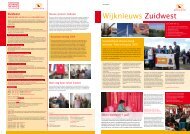freakonomics
freakonomics
freakonomics
You also want an ePaper? Increase the reach of your titles
YUMPU automatically turns print PDFs into web optimized ePapers that Google loves.
soldiers also held minimum-wage jobs in the legitimate sector to supplement their skimpy<br />
illicit earnings. The leader of another crack gang once told Venkatesh that he could easily<br />
afford to pay his foot soldiers more, but it wouldn’t be prudent. “You got all these niggers<br />
below you who want your job, you dig?” he said. “So, you know, you try to take care of<br />
them, but you know, you also have to show them you the boss. You always have to get<br />
yours first, or else you really ain’t no leader. If you start taking losses, they see you as<br />
weak and shit.”<br />
Along with the bad pay, the foot soldiers faced terrible job conditions. For starters, they<br />
had to stand on a street corner all day and do business with crackheads. (The gang<br />
members were strongly advised against using the product themselves, advice that was<br />
enforced by beatings if necessary.) Foot soldiers also risked arrest and, more worri-some,<br />
violence. Using the gang’s financial documents and the rest of Venkatesh’s research, it is<br />
possible to construct an adverse-events index of J. T.’s gang during the four years in<br />
question. The results are astonishingly bleak. If you were a member of J. T.’s gang for all<br />
four years, here is the typical fate you would have faced during that period:<br />
Number of times arrested 5.9<br />
Number of nonfatal wounds or injuries<br />
(not including injuries meted out by the gang itself for rules violations)<br />
Chance of being killed 1 in 4<br />
2.4<br />
A 1-in-4 chance of being killed! Compare these odds to being a timber cutter, which the<br />
Bureau of Labor Statistics calls the most dangerous job in the United States. Over four<br />
years’ time, a timber cutter would stand only a 1-in-200 chance of being killed. Or<br />
compare the crack dealer’s odds to those of a death row inmate in Texas, which executes<br />
more prisoners than any other state. In 2003, Texas put to death twenty-four inmates—or<br />
just 5 percent of the nearly 500 inmates on its death row during that time. Which means<br />
that you stand a greater chance of dying while dealing crack in a Chicago housing project<br />
than you do while sitting on death row in Texas.<br />
So if crack dealing is the most dangerous job in America, and if the salary is only $3.30<br />
an hour, why on earth would anyone take such a job?<br />
Well, for the same reason that a pretty Wisconsin farm girl moves to Hollywood. For the<br />
same reason that a high-school quarterback wakes up at 5 a.m. to lift weights. They all<br />
want to succeed in an extremely competitive field in which, if you reach the top, you are<br />
paid a fortune (to say nothing of the attendant glory and power).<br />
To the kids growing up in a housing project on Chicago’s south side, crack dealing was a<br />
glamour profession. For many of them, the job of gang boss—highly visible and highly<br />
lucrative—was easily the best job they thought they had access to. Had they grown up<br />
under different circumstances, they might have thought about becoming economists or









